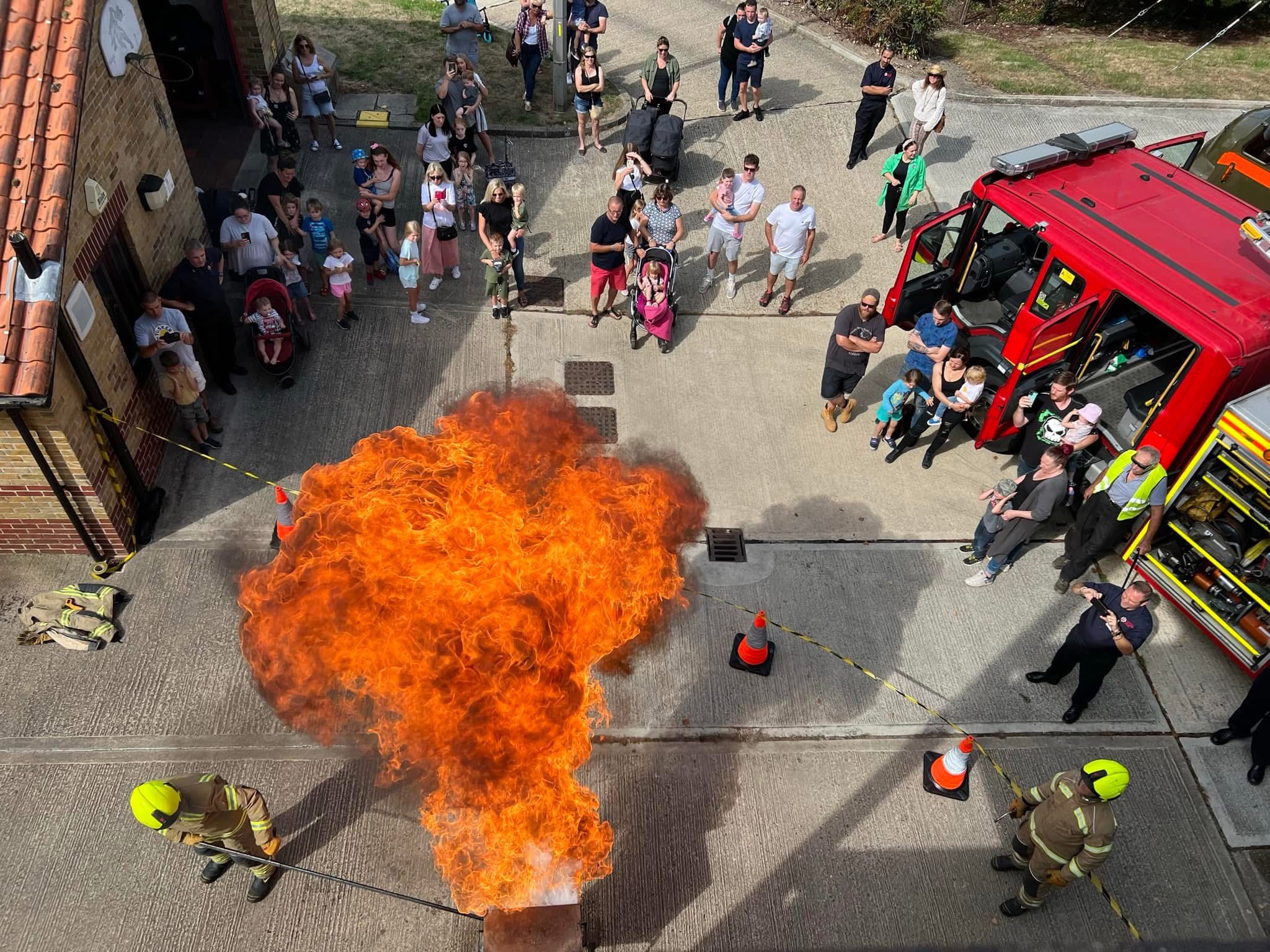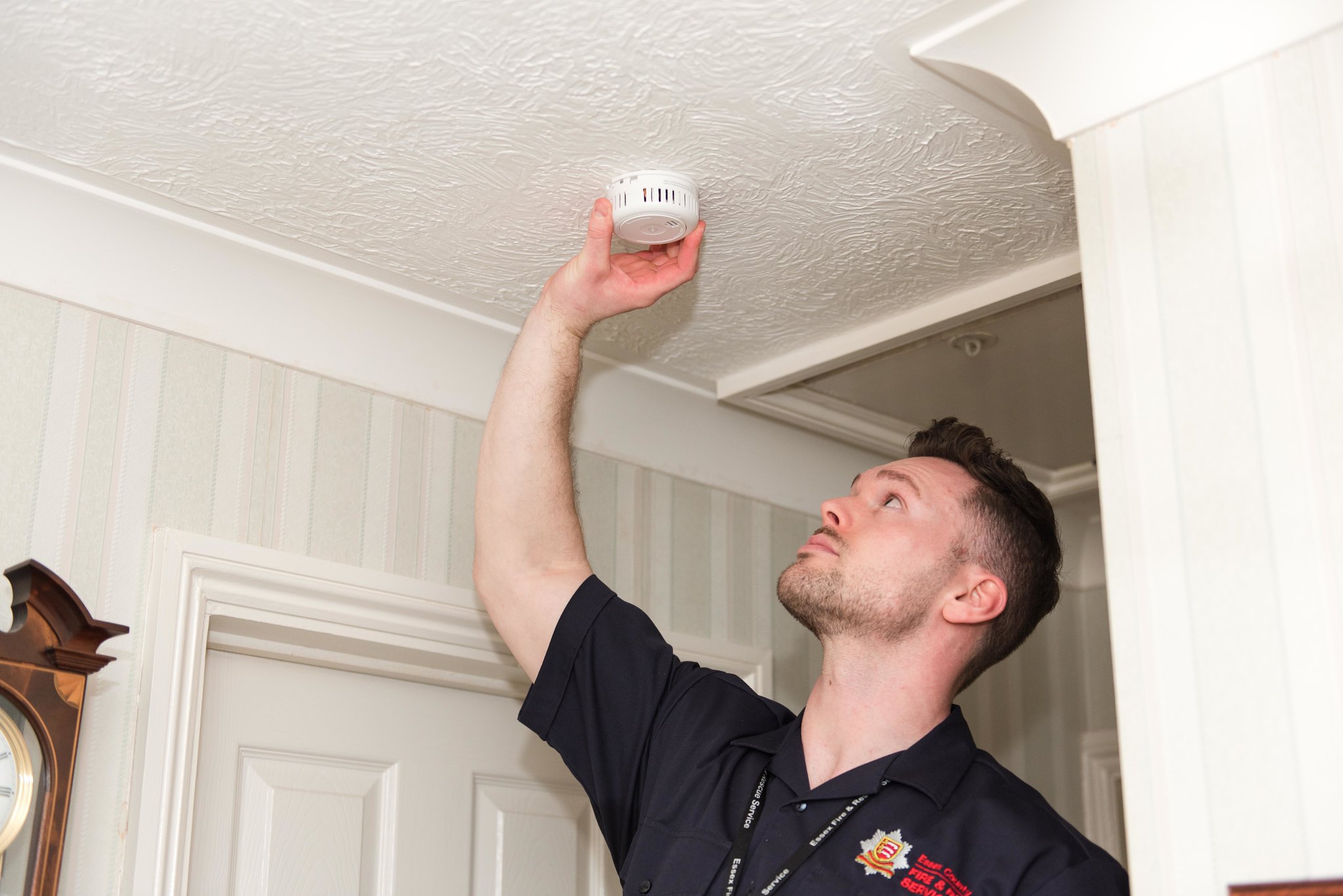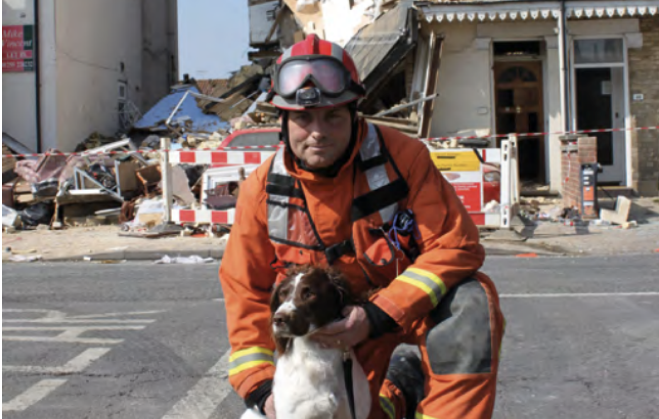The ‘Green Goddess’ Brigade
During the later part of World War 2, the National Fire Service (NFS), which was formed in 1941 by the nationalisation of all the U.K. Local Authority fire brigades and the Auxiliary Fire Service, began to release many of its personnel, to bring the fire service back to a peace time establishment. In 1948 the NFS was disbanded and fire brigades were returned to Local Government, although still under Home Office control. The ‘Cold War’ with Russia was threatening to become a ‘hot war’ so the Government decided to re-activate the Civil Defence Services, which had shown such effectiveness in the grim days of the Blitz of 1940-41. This included the Auxiliary Fire Service (AFS). The new local authority fire brigades were required to train the ‘new’ AFS.
Many former members of the NFS, who missed their ‘fire-fighting days’, joined the ‘new’ AFS, and formed the core of the service. Women were invited to join as Watchroom and Control Room staff and cooks. The Government’s intention was that there would be 2 Auxiliary firemen for every professional fireman and the same for female Control Room staff. This number was never reached.
The Essex County Fire Brigade (ECFB) had contingents of the AFS at several of the larger fire stations in the County as well as a large depot at Suffolk Road, Seven Kings, Ilford. They wore the standard fire gear of the times, with the Essex ‘cherry red’ steel helmets, as originally worn by the ECFB.
To begin with, the Government issued vehicles to the newly formed AFS that had previously been used by the NFS. These vehicles had been placed in store, pending their disposal, but were serviced and issued to fire brigades across the country for their AFS contingents. Made up mainly of Fordson 7V or Austin K4 Heavy Units and Austin K2 ATV towing vehicles with trailer pumps, the fleet was somewhat varied. As these appliances reached their new homes, it was up to the local fire brigades to paint them. Some, such as in London, were painted in red with full London Fire Brigade sign-writing, whilst others stayed in their previous war time grey paint. Most were subsequently re-painted in Bronze Green, which was the colour used by the British Army for some of its military vehicles. They were marked with the AFS logo in red lettering.
Typical of Ex NFS vehicles issued to the AFS, was this Austin K4 Heavy Pumping Unit (EFM Archives)
The old vehicles were not really suited to the requirements of the new service and as a result, the Home Office, in partnership with the British fire services, designed and commissioned a completely new fleet of fire appliances for the AFS.
The first new vehicles began to arrive in 1952/3. Built on the Bedford ‘SLHZ’ Model chassis, the rear wheel drive Emergency ‘Self Propelled’ Pumps were painted in Bronze Green, they were soon christened
‘Green Goddesses’. Built to modern standards, for the times, these AFS appliances were often based at fire stations housing time worn ‘open’ fire appliances of the pre-WW2 era, crewed by the regular fire service!
The Emergency Pump was powered by a Bedford Six cylinder, 110HP, Petrol Engine and was fitted with a Sigmund 900 gallons per minute (4,090 litres pm) pump. It had a 400 gallon (1820litres) water tank and carried a Coventry Climax 300 gpm (1360 litres per min.) Light Portable Pump. It had a full fire- fighting complement of hose, small gear and lines, plus a 35 feet (10.6m) Aluminium Extension Ladder. This was a modern and comprehensively equipped fire appliance. It had twin amber warning lights at roof level above the cab front and a hand rung bell on the roof.
The iconic ‘Green Goddess’, a 1953 Bedford SLHZ Emergency Self Propelled Pump of the Essex AFS, seen at the Suffolk Road, Seven Kings, Ilford, AFS Depot.
(EFM Archives)
To support the Emergency Pumps, other appliances were soon to follow, including Hose Laying Lorries,
Control Units, Foam Tenders, Pipe Carriers, Communications Vehicles, Petrol Carriers and General Purpose Lorries, mainly based on the Bedford ‘S’ Type chassis.
1953 Bedford S Type AFS Control Unit (EFM Archives)
Land Rovers and later, Austin Gypsy 4x4 vehicles were used as both Command Cars, Communications Vehicles and Reconnaissance Vehicles. Ford Consuls and Austin Countryman Estate Cars were used as Staff Cars for Senior Officers.
1953 Land Rover Command Car (EFM Archives)
Land Rover Series 2 General Purpose Vehicle, used as a Wireless Repeater Station. (EFM Archives)
BSA and Matchless motorcycles were issued to the AFS for use by specially trained Dispatch Riders. The Dispatch Riders were used to carry messages in case of communications failures and also to assist in the movement of convoys of AFS appliances on the move.
AFS Dispatch Riders on their Matchless Motor Cycles (EFM Archives)
A unique new type of appliance was issued to the AFS only. This was the Transportable Water Unit. These heavy vehicles, built on the Commer ‘Superpoise’ Q4 military chassis, carried three inflatable rafts and nine portable pumps, plus an unloading and launching crane. The rafts could be used for pumping water from rivers or lakes to land appliances on shore, or as small fire boats. This type of vehicle soon gained the nick-name ‘Bikini Unit’ due to the shape of it’s rafts inflatable sides!
Commer Q4 Superpoise 4x4 Transportable Water Unit, note the three large ‘bags’ on the roof containing the inflatable rafts.
(EFM Archive)
Bikini rafts being launched into the Thames near Tilbury in Essex. (EFM Archives)
A later version of the Green Goddess Emergency Pump, based on the Bedford ‘R’ type 4x4 chassis, was built in large numbers. It had a smaller water tank holding 300gallons (1360 litres) but, otherwise, was almost the same as the 4x2 ‘S’ type. Although some were issued to fire brigades for AFS use, most were held in large Home Office stores, ready for issue in times of emergency.
Bedford RLHZ 4x4 Self Propelled Emergency Pump(Photo by kind courtesy of Tony Knell)
Bedford ‘R’ Type Recovery Vehicle (EFM Archive)
Also on the ‘R’ type 4x4 chassis and Thornycroft chassis, were Heavy Recovery Vehicles. These were
issued to some fire brigade AFS contingents.
Once AFS personnel had completed the necessary training, they were allowed to attend fires and other incidents within their local Fire Brigade areas, to gain experience. Riding their own Green Goddess appliances, they attended many large fires and their help and assistance was welcomed by their professional colleagues. In the early 1960s, Auxiliary Fire Service firemen were issued with standard fire helmets as worn by their parent brigades. The old ‘tin helmets’ were withdrawn and the then current military Mk 4 Helmet, painted black, was issued for use in times of warfare or on exercises.
The AFS was specifically trained to be able to move to particular rendezvous points, where other AFS units would converge to form a column consisting of many Emergency Pumps, Hose Laying Lorries, Communications Vehicles, Petrol Carriers, Command and Reconnaissance vehicles, Pipe Carriers, Bikini Units and most importantly Mobile field Kitchens. These columns were self sufficient for food and water and could then be sent to support any area where, under wartime circumstances, the fire brigades in that area were in need of support. Many exercises were carried out, which saw AFS contingents traveling the length and breadth of the country. The Torrey Canyon tanker disaster, which occurred in 1967, saw AFS units from many parts of the country travel to Cornwall to assist in the huge task of clearing up the massive oil spill that had washed up on many beaches in the area. In 1968, in spite of considerable protest by the AFS and many fire brigades, the Auxiliary Fire Service was disbanded along with the whole Civil Defence organisation.
In the 1950s and 60s many ‘National Service’ military personnel were trained to use the ‘R’ type Emergency Pumps as an extra ‘back up’ for the AFS. Although never used when the AFS existed, some of these reserve, 4x4, appliances were issued to the fire service in the summer of 1976, to provide more suitable vehicles to help deal with the huge numbers of grass fires that were occurring.
Green Goddess Emergency Pumps awaiting their military crews at Redford Barracks in Scotland in 2002 prior to the Fire Service strike. (Photo by kind courtesy of Tony Knell)
In 1977 the UK Fire Service went on strike following the collapse of pay talks. Hundreds of ‘Green Goddess’ pumps were brought out of storage and issued to the Armed Forces to enable them to provide basic fire cover throughout the country. Minor modifications, such as blue beacons and two tone horns were fitted to comply with modern warning regulations. The vehicles were also issued again in 2002/3 when, once again, strike action was called for by the Fire Brigades Union. Eventually, all of the stored vehicles, the last vestiges of the Auxiliary Fire Service, were sold off soon after 2003. Some went to fire services in developing countries, many to collectors and also to companies that saw a use for them and others were sold for spares or scrap.
What had been achieved by the AFS in it’s 20 year existence? It had provided a reliable ‘second line’ to many a city and county fire brigade. It possessed special equipment that most fire brigades would not be able to afford financially, such as large numbers of Pumping appliances, Pipe Carriers, Bikini Transportable Water Units and Mobile Field Kitchens, all of which were used at times of national emergency. Because of it’s recruiting policy, (the earliest age for joining was 17) many young AFS firemen, having had a ‘taster’ of fire service life, went on to become full time professional fire fighters.The AFS had clearly achieved a great deal.
M.Beale
Essex Fire Museum September 2022


